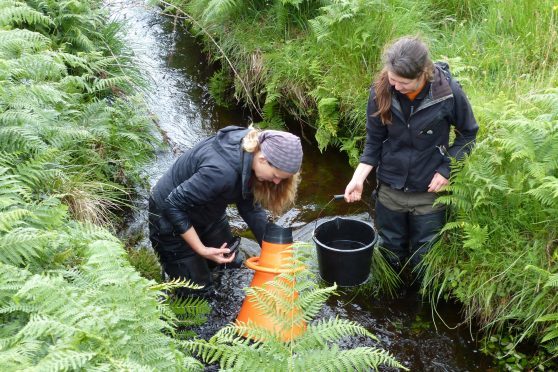Two Highland women will spend the next two years trying to save one of the most critically endangered molluscs in the world.
Scottish pearl mussels can live more than 100 years and many of those found in Lochaber are now 40 to 60 years old, or older, with little sign of any young ones being produced.
Lochaber Fisheries Trust has just received a two-year grant from the Heritage Lottery Fund, the Landfill Communities Fund and Scottish Natural Heritage, for a project to increase local populations of the mussel.
It will focus on the three special areas of conservation for pearl mussels in Lochaber, including Ardnamurchan Burns, the River Moidart and Glen Beasdale.
Dr Diane Baum and Lucy Ballantyne, who work for the Fort William-based trust, will be helping the molluscs to reproduce.
Dr Baum said: “Freshwater pearl mussels are critically endangered and a large part of the world’s remaining population is found in Scottish rivers.
“We have a duty to protect this species in the same way that other countries look after their elephants and pandas.
“Pearl mussels might not be as cute as these species, but they play an important role in the life of our rivers and, if undisturbed, some individuals can live quietly on the stream bed for over 100 years.”
The life of a pearl mussel is complex.
It starts with the release into the water of glochidia – the microscopic larval stage – which cling to the gills of fish, usually brown or sea trout.
These spend winter in the fish, later dropping off into the burn as young adults.
Dr Baum and Mrs Ballantyne will be helping to transfer the glochidia from the pearl mussel to the fish.
Dr Baum said: “They are now protected from illegal fishing, but many pearl mussel populations seem to be struggling to reproduce in our rivers as the clean water, stable river bed and good numbers of young salmon or trout that act as hosts for their larval stage are no longer present.
“This project aims to improve the success rate of a crucial part of the pearl mussels’ life cycle by increasing the likelihood that mussel larvae will encounter a fish host.
“We will also make improvements to the river habitat and get local communities involved in looking after the mussels in their rivers and understanding the role this creature has played in the natural and cultural heritage of the region.”










